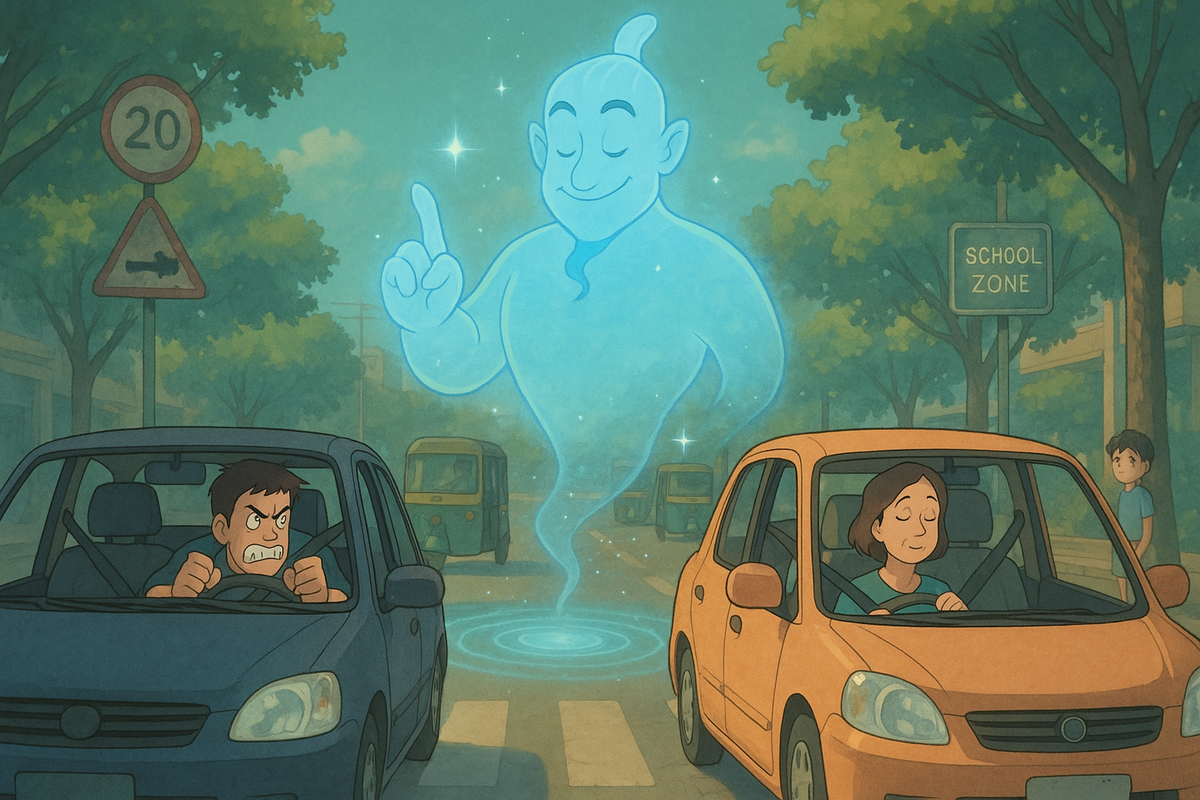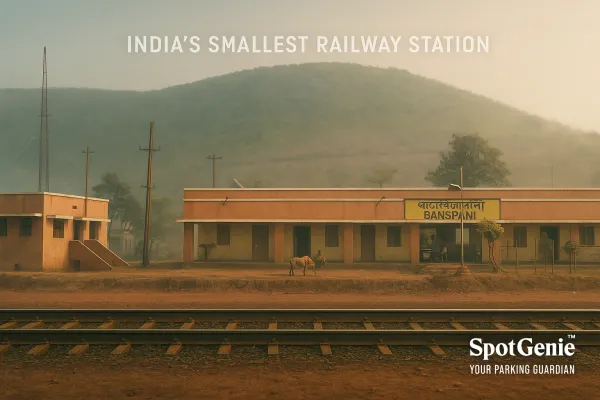The Hidden Cost of Road Rage in Indian Cities
Road rage in India causes more than traffic fights — it leads to stress, damage, and rising costs. Discover its impact and how calm driving helps cities.

Road rage in India causes more than traffic fights — it leads to stress, damage, and rising costs. Discover its impact and how calm driving helps cities.
🧞♂️ Greetings, travelers of tension. I’ve seen how a single honk grows into hate. Rage on the road doesn’t just end in shouting — it spills into how cities feel. Let’s uncover its true cost.
1. Introduction: When Horns Become Weapons
Urban driving in India often feels like a stress test — tight lanes, unyielding signals, endless honking. But for many, it’s more than frustration. It’s rage.
Road rage is no longer a rare phenomenon — it’s an everyday risk. Fights, vandalism, verbal abuse, and high-speed retaliation are increasingly common. What begins with a horn too long often ends in damage — emotional, social, or legal.
In the chaos of traffic, our emotions take the wheel. And cities suffer silently.
2. What Triggers Road Rage?
Why are Indian roads such fertile ground for flare-ups? It’s not just congestion — it’s cultural and systemic. Here are the common culprits:
- Heavy traffic & long commute times: Fatigue, delays, and unpredictability spike frustration
- Entitlement mindset: “My time matters more” = anger at delay, queue, or right-of-way
- Toxic masculinity & ego: Aggression used to assert dominance, especially among young male drivers
- Weak enforcement: Lack of penalties emboldens repeat aggressors
- Noise pollution: Constant honking raises stress levels unconsciously
When cities push people to the edge, they drive like they’ve been pushed there.
3. Psychological and Social Impact
Road rage doesn’t stay in traffic. It spills into homes, workplaces, and the city’s overall emotional temperature.
- Stress & anxiety: Road fights can lead to elevated cortisol and long-term mental health strain
- Public aggression cycles: Children learn from angry adults, normalizing verbal abuse or intimidation
- Distrust & civic breakdown: More rage = less cooperation at signals, crossings, and bottlenecks
One angry intersection seeds a ripple of fear — and that fear spreads fast.
4. Financial and Legal Fallout
Beyond bruised egos, road rage leaves behind broken laws — and hefty bills. Here’s how:
- Traffic fines: Aggressive driving, rash overtaking, or illegal U-turns attract penalties up to ₹5,000
- Jail time: Assault, vandalism, or injury due to rage can result in FIRs and legal action
- Property damage: Bumper-to-bumper confrontations often escalate to smashed mirrors, dented vehicles
- Insurance hikes: Repeated claims or documented aggression raise premium costs significantly
According to a recent insurance study, claims involving aggressive driving rose by over 22% in major metros between 2021–2023.
When emotions rise faster than indicators, cities pay — literally.
5. Prevention: Individual Response + Urban Design
Fixing road rage is a shared task — between the mind and the map. Here’s how we begin:
- Driver education: Embed emotional awareness into licensing and refresher courses
- Designing calm zones: Slower speed limits near schools, hospitals, and high-tension intersections
- Visual softening: Plants, art, and color-coded signals reduce cognitive stress
- Tech tools like SpotGenie: Replace confrontations with contactless communication
- Mindful messaging: Signage that asks for patience, not just obedience
Prevention starts in the mirror. But it flourishes in policy.
6. Conclusion: Drive Light, Think Soft
Rage is the enemy of rhythm. And streets are songs best sung in harmony.
As your Genie of calm corners, I whisper this: anger may get you ahead — but kindness gets us all home. So breathe, brake gently, and let go.
Every calm turn saves another’s day.
Keywords: road rage India, aggressive driving behavior, traffic anger issues, emotional cost of driving, road rage penalty India, traffic fines for aggression, psychological effect of road rage, SpotGenie Gyaan, road rage insurance claims, road rage solutions India, calming traffic design, Indian traffic psychology, urban driving stress, civic cooperation road, contactless driver communication
Follow us on:
🅾 Instagram |
ⓕ Facebook |
𝕏 X |
▶️ YouTube |
🟢 WhatsApp
🧠 More SpotGenie Gyaan to Help You Drive with Calm & Clarity
- The Science of Honking – Understanding Urban Noise in India
- Traffic Fines Most Indians Still Don’t Understand – Know the Rules
- Is Traffic Stealing Your Life? – Time Loss & Stress on Indian Roads
- Urban Parking 101 – What’s Legal, What’s Not in Indian Cities
- Get SpotGenie – Avoid Confrontations with Contactless Vehicle Alerts
Road rage doesn’t just hurt drivers — it drains cities. SpotGenie is your everyday reminder to drive calm, drive smart, and drive connected.



